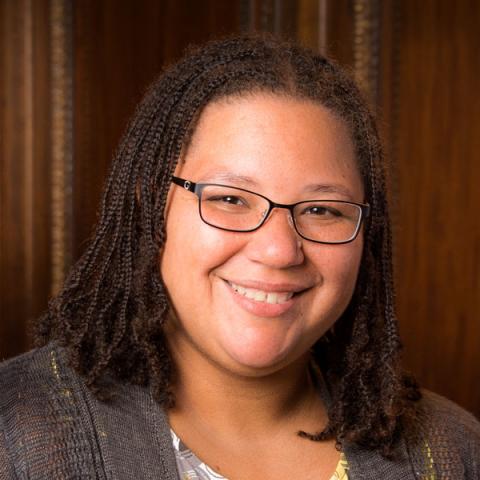Last fall, voters in three traditionally conservative states — Idaho, Nebraska, and Utah — approved ballot initiatives to expand eligibility for Medicaid. Not only could an estimated 150,000 uninsured residents living below or near the poverty level gain health coverage1 as a result, but growing evidence shows that Medicaid expansion has led to positive net impacts on state budgets as well as significant reductions in uncompensated care.
But between passing Medicaid expansion at the ballot box and actually enrolling the newly eligible in coverage, there are some critical steps states must take. Below we take a look at how expansion efforts are faring in the ballot states as of February 2019, and what their experiences could mean for other states considering this strategy.
Idaho
Idahoans voted overwhelmingly to pass Proposition 2, which increased Medicaid eligibility to people with income up to 138 percent of the federal poverty level — about $17,000 for an individual. Although the conservative Idaho Freedom Foundation filed a lawsuit shortly after the election arguing that the ballot measure was unconstitutional, the Idaho Supreme Court earlier this month determined the ballot measure to be legal.
Republican legislators have discussed adding restrictions to coverage under the Medicaid expansion, such as work requirements and a limit on how long people can be enrolled. Lawmakers also must decide how the state will pay for its 10 percent share of the expansion cost before the legislative session ends on March 29. Governor Brad Little’s proposed budget indicates the state share can be covered partly by reduced state spending on health services that will now be covered by Medicaid with higher federal matching funds and partly by existing state funds.
Nebraska
Initiative 427, passed with 54 percent of the vote, puts Nebraska on track to cover as many as 58,000 additional residents. Officials are set to submit a “state plan amendment” by April 1, a necessary step before the newly eligible can be enrolled. No enrollment date for the new expansion population has been announced.
In his state-of-the-state address, Governor Pete Ricketts noted that his proposed budget “reflects the vote of the people” on Medicaid expansion. Nebraska legislators still need to decide if they will accept the governor’s allocation of general funds and offsets to cover the state share of Medicaid expansion before the budget is adopted in May. While no legislation was introduced to add restrictions to the expansion before the filing deadline, there are bills under consideration to generate new revenue to cover a portion of the state share and to create an oversight task force for implementing the expansion.
Maine
In 2017, a majority of Maine voters (59%) approved a ballot measure to expand Medicaid, covering an additional 70,000 people. When then-governor Paul LePage refused to implement the expansion, a lengthy legal fight ensued, finally ending with a judge ordering the state to adopt rules for Medicaid expansion by December 5, 2018.
In January the new governor, Janet Mills, issued an executive order directing the Department of Health and Human Services to immediately act to implement the Medicaid expansion. As of February 15, more than 6,000 people have been enrolled. Legislators now must appropriate funding to cover the state share of the expansion before the session ends in June.
Montana
Montana passed its Medicaid expansion law in 2015, with a sunset provision that ends the expansion on June 30, 2019. Since enrollment began in 2016, some 96,000 adults have been covered under the enhanced eligibility rules.
A state ballot initiative that would have added taxes on all tobacco products to fund the expansion and eliminate the sunset provision narrowly failed, with supporters greatly outspent by tobacco companies opposed to the tax ($9.7 million to $17.5 million). One analysis suggests the Medicaid expansion has been positive for the state budget and economy. Another report estimates that it will create 5,900 to 7,500 jobs and increase state tax revenues by $25 million to $30 million a year from 2018 to 2020.
The Montana legislature is considering multiple proposals to extend and fund Medicaid expansion into the future. One measure would add funding to a voluntary employment and training program that has connected more than 22,000 newly eligible Medicaid beneficiaries to employment services; another would add work requirements. According to a study supported by the Commonwealth Fund, mandatory work requirements are less efficient than voluntary work programs and likely lead to coverage losses and few employment gains.
Utah
With passage of Proposition 3, Utah was slated to increase Medicaid eligibility to 138 percent of the poverty level, with enrollment to start April 1. The measure included a state sales tax (0.15%) to pay the state’s share of expansion.
But almost immediately after the legislative session convened, efforts were under way to repeal the proposition and pass an alternative, partial expansion. This month, Governor Gary Herbert signed a bill that does just that, replacing the full expansion with a partial one (up to 100% of poverty, or about $12,500 for an individual). The new law also directs the state to seek federal waivers that:
- allow Utah to receive the enhanced 90 percent federal matching rate, which has been available only for full Medicaid expansion, instead of the usual federal match of 68 percent
- caps the federal Medicaid funding contribution, which is currently open-ended
- limits how many people can be enrolled under expansion.
A partial expansion with enhanced federal match and per capita caps on federal reimbursements has not previously been approved by the Centers for Medicare and Medicaid Services (CMS). If CMS doesn’t approve these waivers, the full expansion of Medicaid, as approved by Utah voters, will proceed.
In addition to covering about 60,000 fewer people than the voter-approved version, the replacement law would cost the state more: the state share for the partial expansion would be 32 percent for at least 18 months while the state seeks CMS waivers, compared to 10 percent for full Medicaid expansion.
Initiatives Not an Option in Every State
Ballot initiatives to expand Medicaid in Idaho, Nebraska, and Utah passed, in large part, because the public recognized that doing so is a good deal for states, since the federal government picks up at least 90 percent of the cost. Of the 14 states that have yet to expand Medicaid, eight do not allow voter initiatives or popular referenda, and two states, Missouri and Florida, are considering legislation to make it harder to introduce ballot initiatives and raise the threshold for voter approval.
In some states, Medicaid expansion through voter initiatives would have to be implemented by the same legislatures or governors who opposed expansion in the first place. As we’ve seen in Maine and Utah, this can pose a considerable obstacle to success. Nevertheless, as demand for affordable health care grows and policymakers weigh their options, we may yet see more states opt for this approach.






